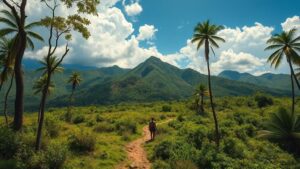Searching for signs of the endangered pygmy sloth on remote mangrove islands.
Searching for Signs of the Endangered Pygmy Sloth on Remote Mangrove Islands
The pygmy sloth (Bradypus pygmaeus) is one of the most endangered species in the world, found only on a few remote mangrove islands off the coast of Panama, particularly on Isla Escudo de Veraguas. This elusive creature has garnered the attention of conservationists and researchers alike due to its limited habitat and shrinking population. In this article, we will delve into the significance of searching for signs of the pygmy sloth, the challenges faced in their habitat, and the efforts being made to ensure their survival.
Understanding the Pygmy Sloth
The pygmy sloth is a rare subspecies of the three-toed sloth, characterized by its much smaller size, reaching only about 60 centimeters (24 inches) in length. Unlike other sloth species, which primarily inhabit rainforest canopies, the pygmy sloth thrives in mangrove ecosystems, where it has adapted to a unique diet of mangrove leaves and buds. This selective diet fuels its slow metabolism, which allows it to survive on the nutrient-poor leaves it consumes.
Discovered relatively recently, in 2001, the pygmy sloth population is estimated to be fewer than 500 individuals, making it critically endangered according to the International Union for Conservation of Nature (IUCN). The isolation of its habitat limits genetic diversity, further threatening the species’ long-term survival.
Searching for Signs
Searching for signs of the pygmy sloth in its remote mangrove island habitat is both an essential and challenging task. Researchers and conservationists employ various methods to locate this elusive animal, focusing on the signs that indicate its presence:
- Observational Surveys: Teams conduct systematic surveys across the mangrove islands, looking for sloth tracks, feeding sites, and dung.
- Camera Traps: Motion-sensitive cameras are set up in strategic locations to capture images of the sloths as they move through their habitat.
- Genetic Sampling: Collecting genetic material from tree bark or fecal matter can help identify the presence of pygmy sloths in an area.
These methods not only help researchers gather data on the current population size but also understand their behavior and habitat preferences. For example, a study in 2018 utilized camera traps and was able to document pygmy sloth activities over several weeks, revealing crucial data about their feeding habits and movement patterns.
Challenges in Their Habitat
The pygmy sloth faces numerous challenges exacerbated by human activity and climate change. Major threats include:
- Habitat Loss: Mangrove deforestation for agricultural expansion and urban development significantly reduces available habitat.
- Climate Change: Rising sea levels and increased storm intensity threaten mangrove ecosystems, which are crucial for the sloths survival.
- Human Encroachment: The proximity of nearby communities often leads to unregulated hunting and further habitat degradation.
For example, studies indicate that the mangroves surrounding Isla Escudo have shrunk by over 50% in the last two decades due to coastal development initiatives. These alarming statistics illustrate the urgent need for conservation efforts.
Conservation Efforts
To combat the threats facing the pygmy sloth, several conservation initiatives have been put in place. The Fundación para la Protección del Mar y la Conservación de la Fauna (FUNDAMAR) has been pivotal in spearheading local conservation efforts. Some notable initiatives include:
- Protected Areas: Establishing protected marine and terrestrial areas around Isla Escudo to safeguard the sloths habitat.
- Community Engagement: Working with local communities to raise awareness about the pygmy sloth and promote sustainable practices.
- Research Funding: Allocating funds for ongoing research to monitor sloth populations and study their behavioral ecology.
Recent community programs have engaged local residents in conservation activities, fostering a sense of ownership and promoting stewardship of the endangered species.
Actionable Takeaways
Those interested in contributing to the conservation of the pygmy sloth can take several actionable steps:
- Support Conservation Organizations: Contribute to organizations focused on protecting endangered wildlife and their habitats.
- Advocate for Sustainable Practices: Encourage sustainable development practices in coastal communities to minimize habitat destruction.
- Educate Others: Raise awareness about the plight of the pygmy sloth and the importance of mangrove ecosystems in maintaining biodiversity.
By engaging in these efforts, individuals can play a part in preserving not only the pygmy sloth but also the rich biodiversity of its unique ecosystem.


